Our bones have a hard outer shell and a spongy bone matrix inside that contains cells that both build-up healthy bone tissue and remove old,
damaged bone tissue. This is known as a bone ‘remodelling’ process. It is vital that this balance between the build-up and removal of bone tissue
is maintained for optimal bone health. More importantly, this balance should be maintained throughout a person’s life.
There are three key ingredients that work together to develop and maintain healthy bones:
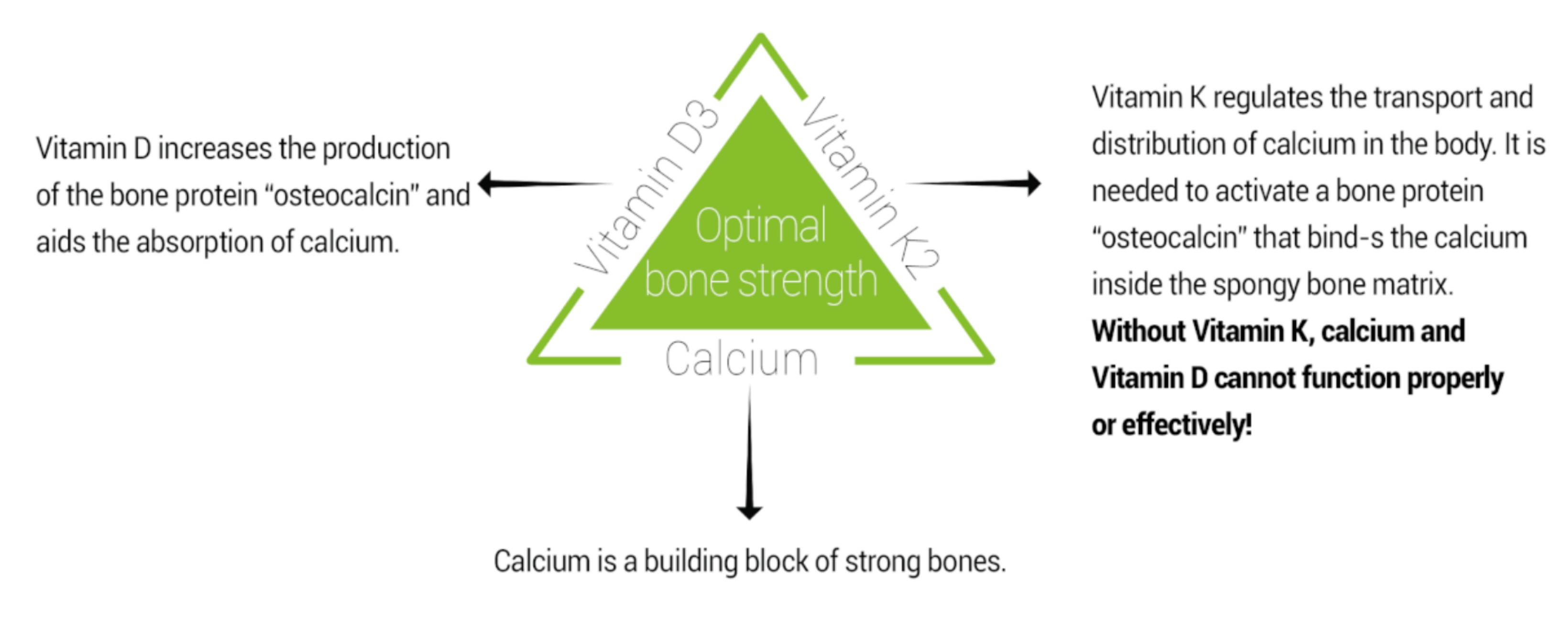
If you don’t maintain the health of your bones, the balance between the build-up of bone (absorption) and bone-breakdown (resorption) is disrupted.
If your bone-breakdown is greater than your build-up of bone, your bones will gradually become more porous (lighter, less dense), weaker and can
fracture more easily.
Bone loss occurs naturally as we age. Our bones gradually lose density and become weaker, increasing the risk for fractures. However, bone strength
and density can be improved during childhood and adolescence, when the skeleton grows most intensively. Therefore, the higher the peak bone mass
gained at a younger age, the longer the bone mass can be preserved.
Osteoporosis is a disease that causes bones to become porous and more susceptible to fractures, especially of the spine, hip and wrist. It is very
common, affecting 1 in 3 women over the age of 50, and 1 in 5 men over the age of 50.
There is no cure for Osteoporosis! That is why prevention is as important as treatment. Preventative measures aim to ensure maximum accumulation
and reduced loss of bone tissue during each stage of life.

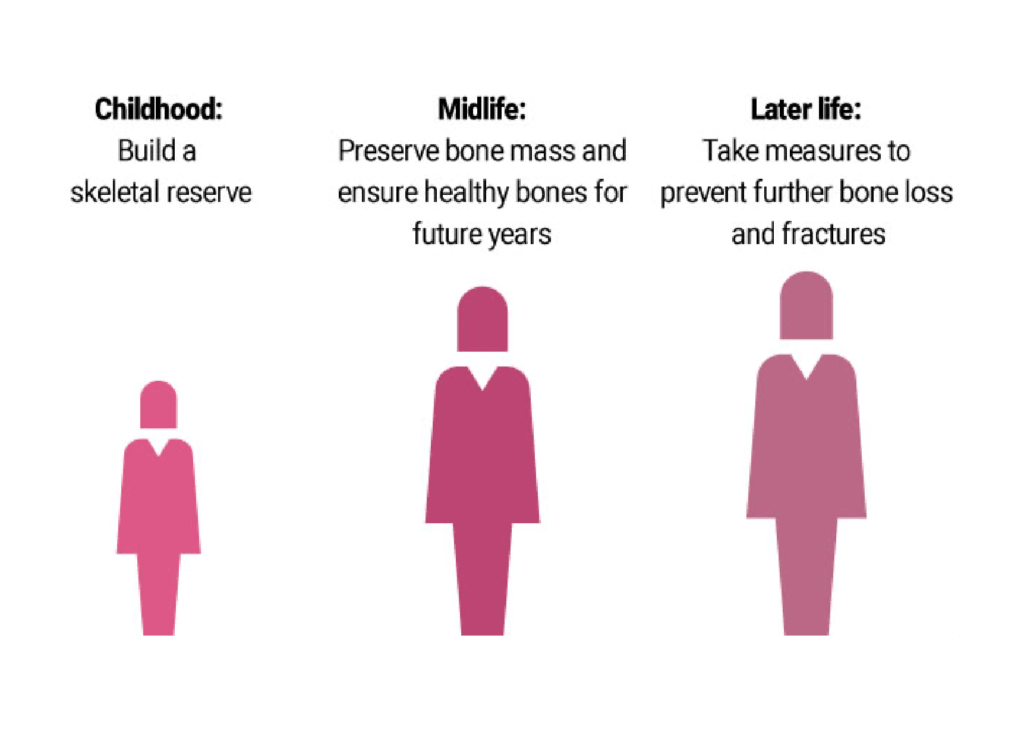
There are certain lifestyle changes you can make to support your bone health.
These four simple habits can help prevent bone loss:
Calcium helps reduce your risk of osteoporosis and is important for people of all genders and ages at every stage of your life.
The best exercise for your bones is the weight-bearing kind. This includes weight-training, walking, hiking, climbing stairs or dancing.
Smoking and excessive alcohol consumption are both risk factors for osteoporosis.
Bones grow and develop most intensively during your childhood and adolescence. During your late 20s to mid 30s your peak bone mass is achieved, after which bone density diminishes slowly. Therefore, the higher the peak bone mass gained at a younger age, the longer the bone mass can be preserved, and the lower the risk of osteoporosis.
Calcium, the building block for bones requires vitamin K, and studies have shown that a better vitamin K status in children is linked to stronger, healthier bones. Young bones are very active and osteocalcin (the bone protein that vitamin K activates for calcium to bind to the bone matrix) levels are 8-10 X higher compared to adults.
Children therefore have a higher requirement for vitamin K, and majority of children are vitamin K deficient!
The consumption of processed food, few vegetables and less food naturally rich in vitamin K has resulted in a low K vitamin intake. In addition, studies in America report that 87 % of adolescent girls and 64 % of boys do not consume sufficient calcium and bone building nutrients for normal bone growth.
Taking a calcium supplement combined with vitamin K, and vitamin D is essential for healthy bones need for life!


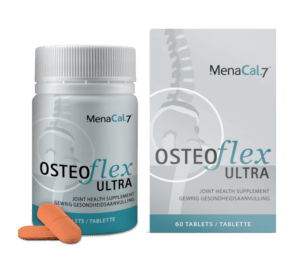
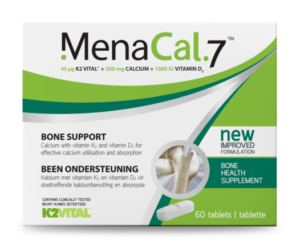
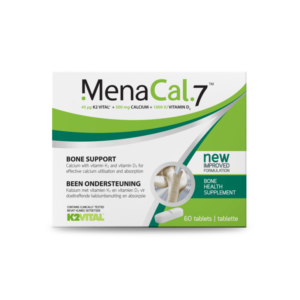
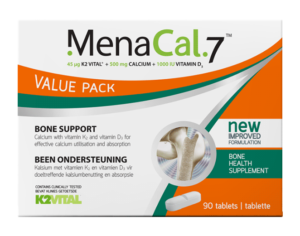
© MenaCal.7™ 2024. All Rights Reserved.
D.34.12 Complementary medicine: Health Supplement. For Full prescribing information and list of ingredients, refer to package insert. This unregistered medicine has not been evaluated by SAHPRA for its quality, safety or intended use.
Disclaimer: References available on request.
© MenaCal.7™ 2021. All Rights Reserved
This unregistered medicine has not been evaluated by the SAHPRA for its quality, safety or intended use